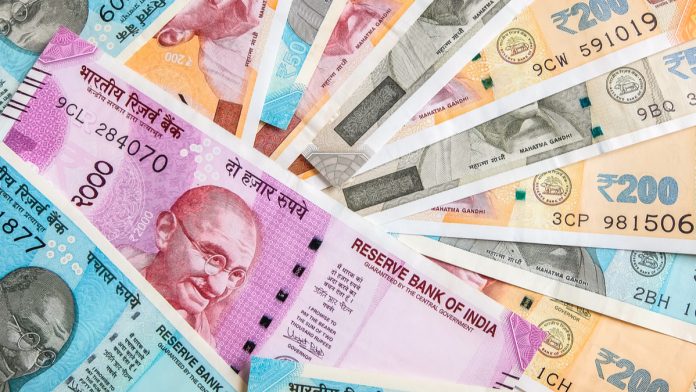- Indian Rupee (INR) recovers from record low close
- Indian wholesale prices rose 0.53% MoM in March
- US Dollar (USD) rises versus its major peers
- US PPI inflation was hotter than expected
The US Dollar Indian Rupee (USD/INR) exchange rate is falling after gains last week. The pair rose 0.3 % in the previous week, settling on Friday at 82.54. At 20:00 UTC, USD/INR trades -0.02% at 83.52 and trades in a range of 83.41 to 83.61.
The Indian rupee fell to its weakest closing level on record today amid rising tensions in the Middle East, weighed on the Asian currencies and riskier assets. However, a possible intervention by the Reserve Bank of India helped stem the losses.
The situation in the Middle East appears to have stabilized for now; however, if there is deterioration, that could put increased pressure on the rupiah.
Meanwhile India’s wholesale prices rose at the fastest pace in three months in March. Hotel inflation increased by 0.53%, principally driven by food. This was slightly above the 0.51 expected by economists. Food prices rose at 4.65% year on year up from 4.09% in February.
The US Dollar is rising across the board. The US Dollar Index, which measures the greenback versus a basket of major currencies, trades at +0.23% at the time of writing at 106.21, extending strong gains from last week.
The US dollar is rising after stronger-than-expected US retail sales data. Retail sales rose by 0.7% month on month in March, up from 0.6% in February, defying expectations of an easing to 0.3%. The data highlights the resilience of the US consumer, with retail sales remaining positive even as interest rates are at a 22-year high.
Data comes after figures last week showed that inflation rose for a third straight month in March, supporting the view that the Federal Reserve may struggle to cut interest rates anytime soon.
Looking ahead, this week is a quieter week as far as U.S. economic data is concerned. Investors will continue to weigh up geopolitical developments in the Middle East, which, if tensions escalate, could support safe-haven flows into the US dollar.





